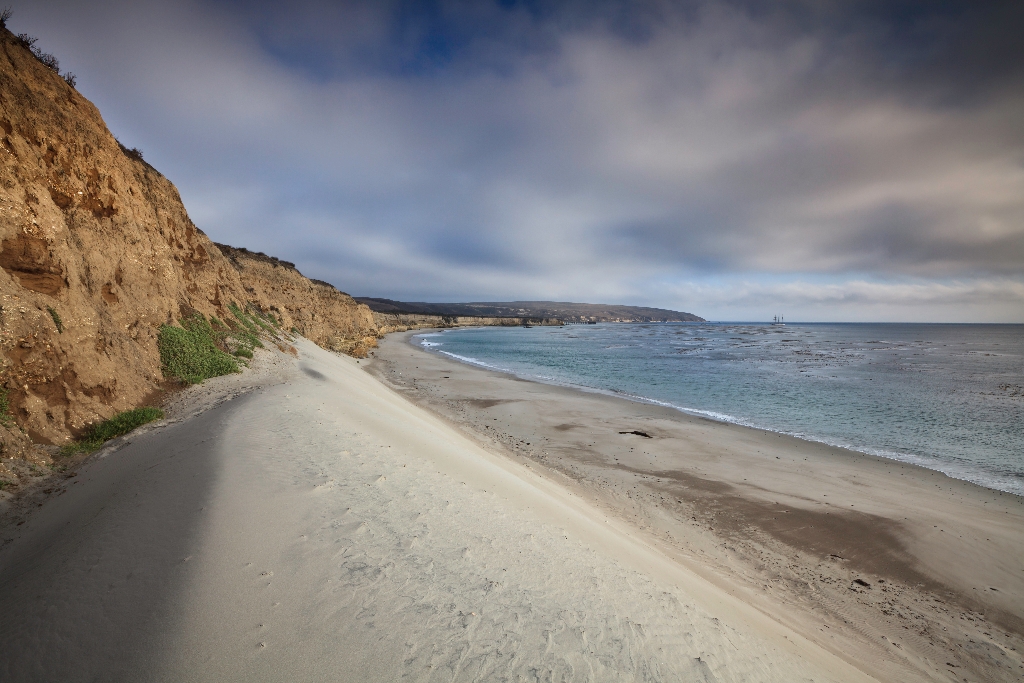
An Ocean Park and Sanctuary
From this incredible two-mile stretch of white sand beach, one has the opportunity to gaze upon another part of the park-the marine environment. One nautical mile of water around each island in the park is part of Channel Islands National Park, and six nautical miles around each island form Channel Islands National Marine Sanctuary.
Within this ocean realm one often sees harbor seals or other pinnipeds (seals and sea lions). The island's expansive and isolated beaches offer sea lions, harbor seals, and elephant seals an ideal combination of safety from predators and freedom from human disturbance, making the beaches an ideal place to rest, breed, and pup.
These pinnipeds, along with a variety of other marine species, also depend on the extensive kelp forests found in these cold waters. While urban and industrial development has altered much of the southern California coastal mainland, the isolated islands contain the most undisturbed stretches of coastline in this region, providing some of the best conditions for kelp forests and their inhabitants.
Kelp is a type of alga that, under ideal conditions (cold, nutrient-rich water), is one of the fastest growing organisms on Earth-it can grow two feet per day. This foliage provides food, shelter, and protection for over 800 different species-from foraging nudibranchs, to grazing snails, to fish seeking refuge, to whales feasting on plankton.
But we must not forget about ourselves. Not only do we feed upon some of the animals that depend upon the kelp forest, but also those of us who eat ice cream, salad dressing, and even use toothpaste are all using a little bit of seaweed as well. Kelp is harvested for a natural ingredient called algin, which is used as a suspending, stabilizing, emulsifying, gel-producing, and film-forming additive in more than 70 commercial products. In addition, marine algae and plants such as kelp provide Earth with 80 percent of its oxygen.
Despite these benefits, the kelp forest and its inhabitants are in jeopardy. Pollution and over-harvesting of marine species have altered the kelp forest ecosystem. Kelp forests in southern California today cover less than half the area they covered at the turn of the 20th century.
However, with the establishment of marine protected areas (MPAs), improved pollution controls, fishing regulations, research, and public education, some of these problems have been corrected.
Within the park and sanctuary a network of MPAs provides a refuge for sea life and opportunities for recreation, education, and science. In 11 marine reserves (including two on Santa Rosa Island-around Carrington and Skunk Points), recreational fishing and commercial harvesting are prohibited; limited fishing and harvesting are allowed in two marine conservation areas. The MPAs total 318 square miles, the largest such network off the continental United States and part of a larger effort throughout the world to conserve natural, historic, and cultural marine resources.
Protecting the Islands
In 1980 Congress established Channel Islands National Park to protect, preserve, and teach us about the islands' fragile resources and unique past, including the Island Chumash and those who came after them, the island fox that recovered from the brink of extinction, the restoration of the islands' native plants, the complicated geologic story, the Santa Rosa Island Torrey pine that occurs nowhere else on Earth, the kelp forest and its inhabitants that depend on these isolated islands for survival, and the wide variety of other natural and cultural resources not mentioned in this trail guide. By understanding these resources and the role isolation plays on these islands, we can help preserve them for future generations to study and enjoy.
The National Park Service needs your help as well. We encourage you to explore and learn more about Santa Rosa Island and the rest of the Channel Islands. But don't stop there. In recognizing the importance of these islands, take your awareness to the action level. Make every effort to safeguard-to preserve-the plants, animals, and artifacts found not only within this park,
Is there something we missed for this itinerary?
Itineraries across USA


















































